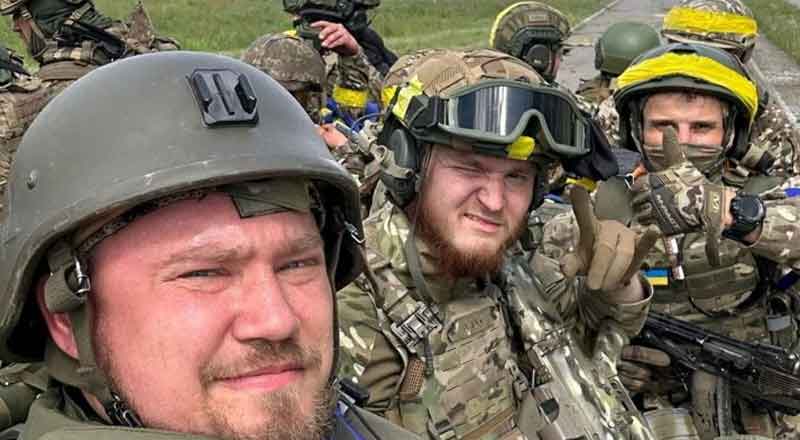- As Ukrainian forces slowly push ahead with their counteroffensive, the country’s military and civilians face a deadly problem which is land mines left by Russia.
- There are new, advanced types that can sense movement or destroy vehicles from hundreds of metres away.
- Land mines have proved a formidable obstacle for Ukraine’s military, bogging down assaults during its counteroffensive and disabling armoured vehicles.
- Meanwhile, Vladimir Putin told African leaders this morning that Moscow respected their peace proposal on Ukraine and was “carefully studying” it.
As Ukrainian forces slowly push ahead with their counteroffensive after more than a year of shifting battle lines, the country’s military and civilians face a deadly problem: land mines, potentially hundreds of thousands of them, scattered across roads, buried in fields and concealed in devastated cities.
There are new, advanced types that can sense movement or destroy vehicles from hundreds of metres away. Most common, however, are older, simple weapons that were produced in the tens of millions and fill the armouries of both the Ukrainian and Russian militaries. Experts say mine contamination is so vast that it is most likely unprecedented in the 21st century.
Because the conflict is ongoing, “there has been no empirical way to determine the area that has been contaminated” or the degree of contamination, said Mark Hiznay, associate arms director at Human Rights Watch. “Whatever the largest category you want to create, call it large, very large, severe, extreme, Ukraine would be in that category.“
Land mines have proved a formidable obstacle for Ukraine’s military, bogging down assaults during its counteroffensive and disabling armoured vehicles. Minefields in Zaporizhzhia and Donetsk oblasts have required large-scale combat engineering efforts, a difficult endeavour for even the best-equipped militaries.
As a result, Ukrainian forces have been forced to proceed at a deliberate pace, attacking Russian artillery and other fire support before attempting to create assault lanes with mine-clearing line charges and armoured vehicles with ploughs.
Militaries and humanitarian deminers use vastly different methods for mine decontamination, so even after Ukraine’s armed forces clear lanes through minefields and recapture territory, the risk to civilians persists and may continue for decades.
“There are still communities interacting with mines every day because they have to, as a matter of livelihood,” said Adam Komorowski, regional director for Eastern Europe, South America and the Caribbean at humanitarian deminer Mines Advisory Group.
“Do I go out and take the risk that I might come across an explosive device? Or do I simply decide to not plant or harvest crops? Either way, you’re making a horrific choice.”
Meanwhile, Vladimir Putin told African leaders this morning that Moscow respected their peace proposal on Ukraine and was “carefully studying” it. He said at a Russia-Africa summit that Russia was increasing food supplies to Africa, including some free grain shipments which he announced a day earlier, and was interested in developing military cooperation with the continent.
The Russian president is believed to be using the series of meetings to strengthen the country’s relationship with various African nations, with Moscow having become increasingly isolated since its invasion of Ukraine.
(With inputs from agencies)





